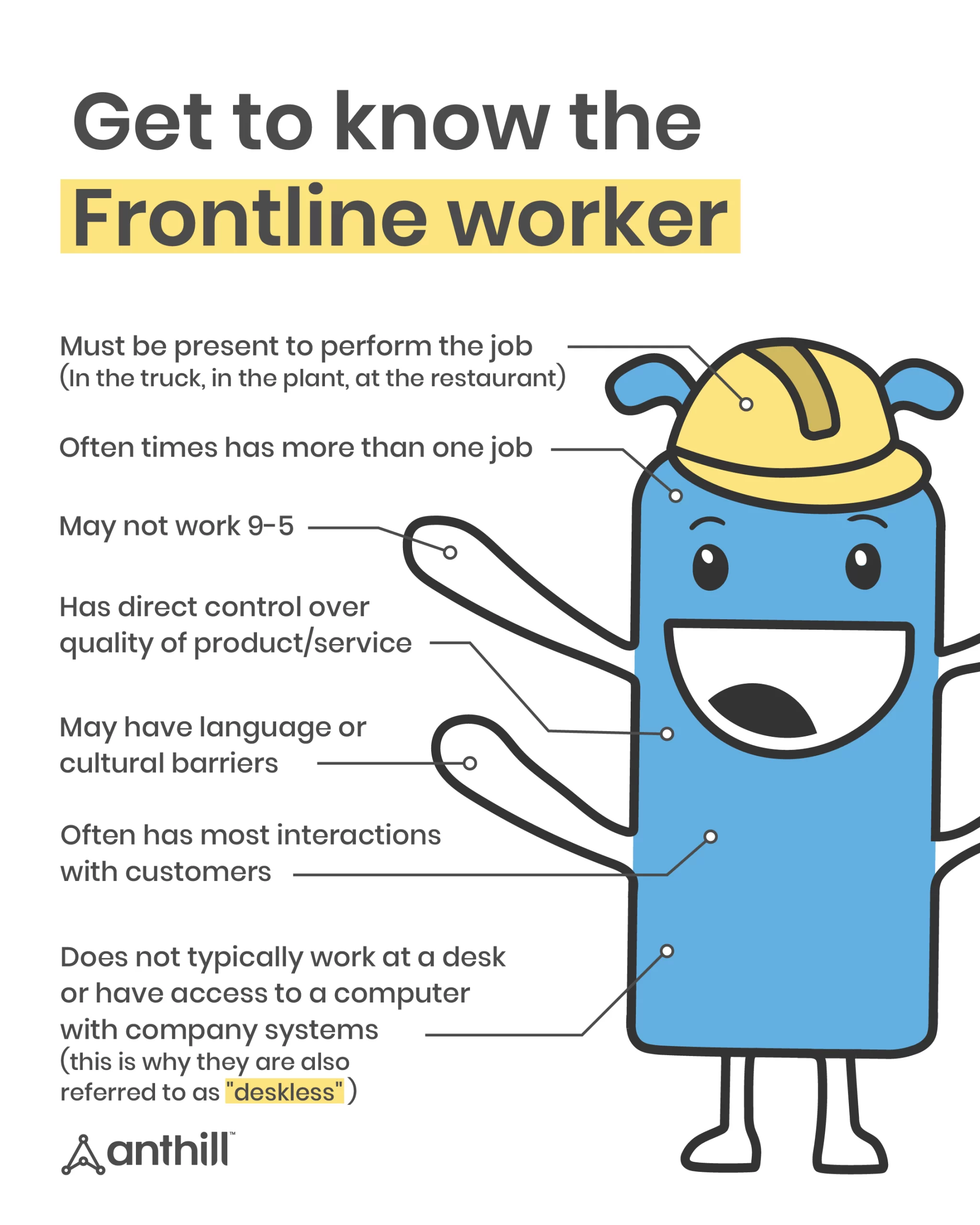You’ve got a large deskless workforce.
You realize that they’re critical to the success and longevity of your company. You realize that there are massive benefits if you can keep them engaged, like identifying risks earlier and reducing turnover (plus it’s just the right thing to do). You may even realize that you’ve done a poor job of involving deskless employees in company conversations in the past.
That’s all well and good, but what are you supposed to do about it? If you have hundreds or thousands of deskless employees, how should you start scaling your efforts to be more inclusive of them?
Great questions!
Let’s look at five simple ways you can get started today.
5 simple ways to scale your deskless employee inclusion program
These five simple ways are all relatively easy to implement, but can have huge benefits for your company over the long-term.
1 – Create a self-service portal
The first way to scale your deskless employee inclusion program is to help your employees help themselves.
Did you know that 73% of employees want self-service options? With such a strong majority of workers asking for tools to help them self-serve, putting the right technology in place to achieve this is foundational.
An effective self-service portal should do many things. Your employees should be able to update their personal info, manage PTO, view or download paystubs, clock in and out, and view upcoming schedules. They should also be able to view benefits info and get answers to frequently asked questions (FAQs).
Meeting this need for employees doesn’t just benefit them. It benefits your company too. Creating a better employee experience will lead to better retention, and will reduce the workload on your overwhelmed HR team.
You probably have tools in place to help with self-service already, but are you confident they are effective for deskless employees?
The needs of an office-based workforce and deskless employees are dramatically different. Most HRIS and benefits tools are built for employees who sit at desks all day and can easily pull up a website on their computer. Since deskless workers are typically on the move, they need a solution that can move with them.
2 – Improve two-way communication
Improving employee communication is one of the best ways to be more inclusive of your deskless employees.
There’s a huge communication gap between companies and their deskless workers. One big reason for this is many companies’ reliance on tools like email and Slack to communicate important information to employees. While these tools may be wonderful for office-based employees, they don’t cut it for a deskless workforce.
Research by Ragan found that 84% of deskless workers don’t think they get enough communication from top management, while only 10% report feeling strongly connected to their employers.
Focus on improving your communication with deskless employees in both directions. Ask questions like:
- How can we share information with employees in ways that don’t require a computer?
- Can we make our communications shorter and clearer for team members that are on the move?
- What can we do to listen better to deskless employees?
3 – Choose tools and channels your employees trust
Speaking of listening to deskless workers: did you know that three quarters of employees at large organizations object to being forced to install work apps on their personal phones?
Employee concerns about downloading work apps typically stem from fears about their employers tracking them or having access to their personal data. And while it may be tempting to just write this off, you shouldn’t.
Employee trust has never been more important, and figuring out ways to foster trust can bring huge ROI in terms of employee engagement and productivity.
The cleanest way to avoid fostering suspicion or distrust is to choose to communicate with your employees using channels they already trust, such as text messaging (SMS).
4 – Give managers ways to automate responses (AI, machine-learning, automation)
Every manager deals with common questions and needs, from time off requests to scheduling conflicts.
Resourcing your managers with tools that enable automated responses to these types of communications has multiple benefits:
- It reduces the time your managers need to spend on these tasks
- It gets your employees answers faster
- It creates a more consistent employee experience across your entire workforce
When you’re aiming to scale a deskless employee inclusion program, every opportunity to automate and get employees easy help matters.
5 – Create pathways to talk to someone
While automated responses can have big benefits, no one likes feeling like they can’t talk to a real human when they need help.
As you’re building out your inclusion program, always make sure it’s easy for employees to escalate their concerns. If they can’t get the help they need when they’re dealing with a serious issue, your attempts to automate and scale can backfire on you. Don’t let well-intentioned attempts introduce frustration.
When you’re able to strike a helpful balance between automating responses and making it easy to get personalized help, you’ll reap the benefits of an engaged deskless workforce and an efficient management process.
Start scaling today
There’s one common element that underlies the most effective ways to scale your deskless employee inclusion program: the right technology. The right technology can amplify your efforts, taking what’s working and multiplying the impact. If you’re ready to take the first step towards scaling your efforts to engage deskless employees, reach out to the Anthill team today for information on how we can help.
.png)



